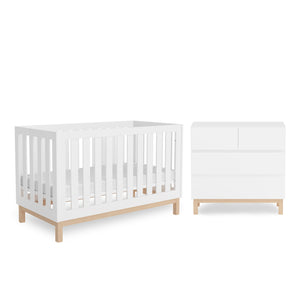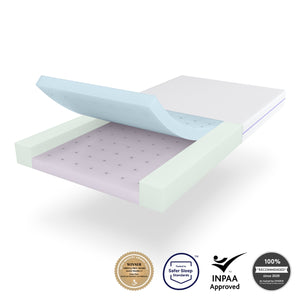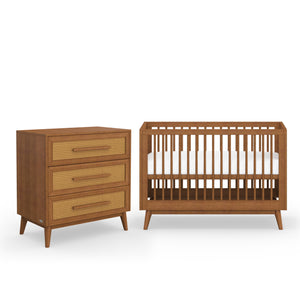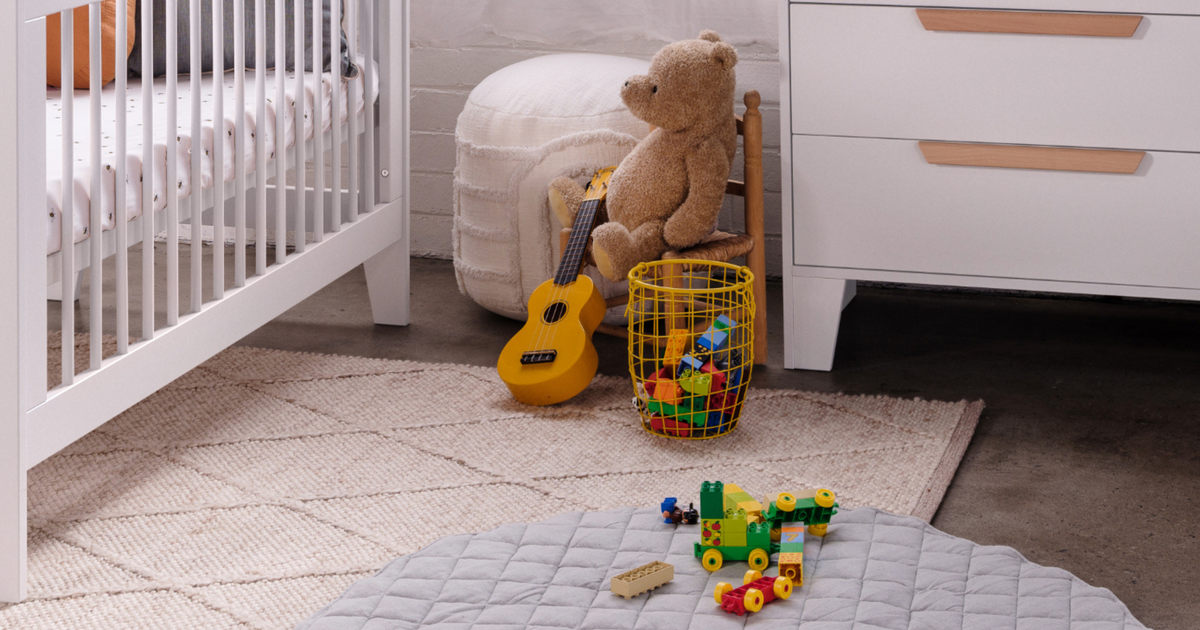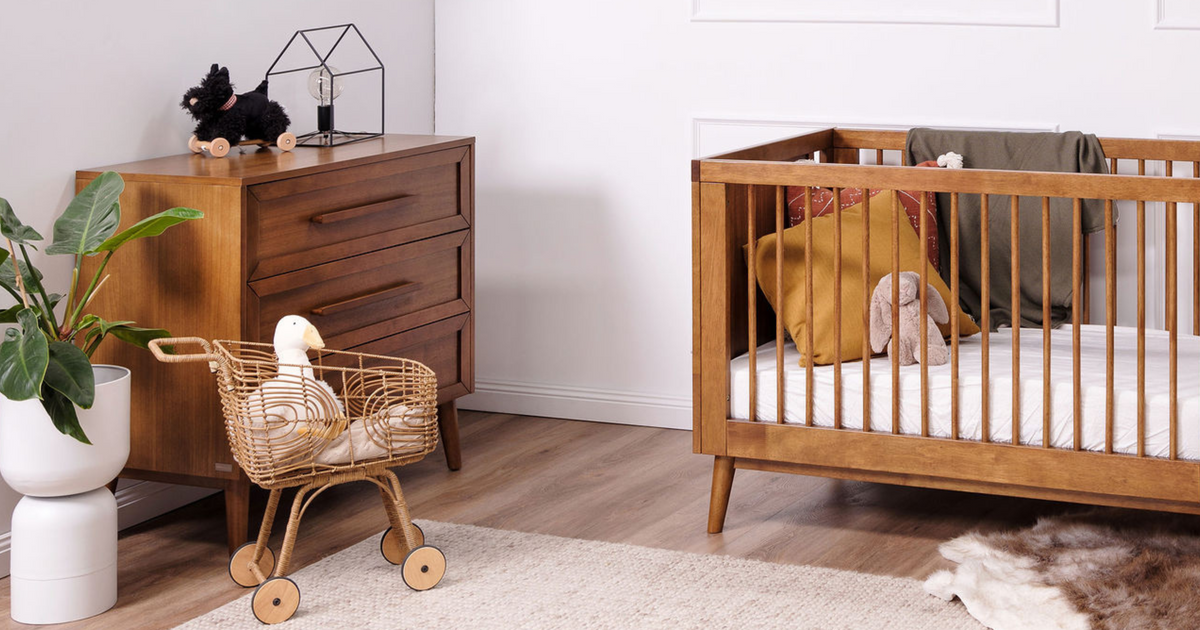How safe is your nursery? Your 10-step safety checklist
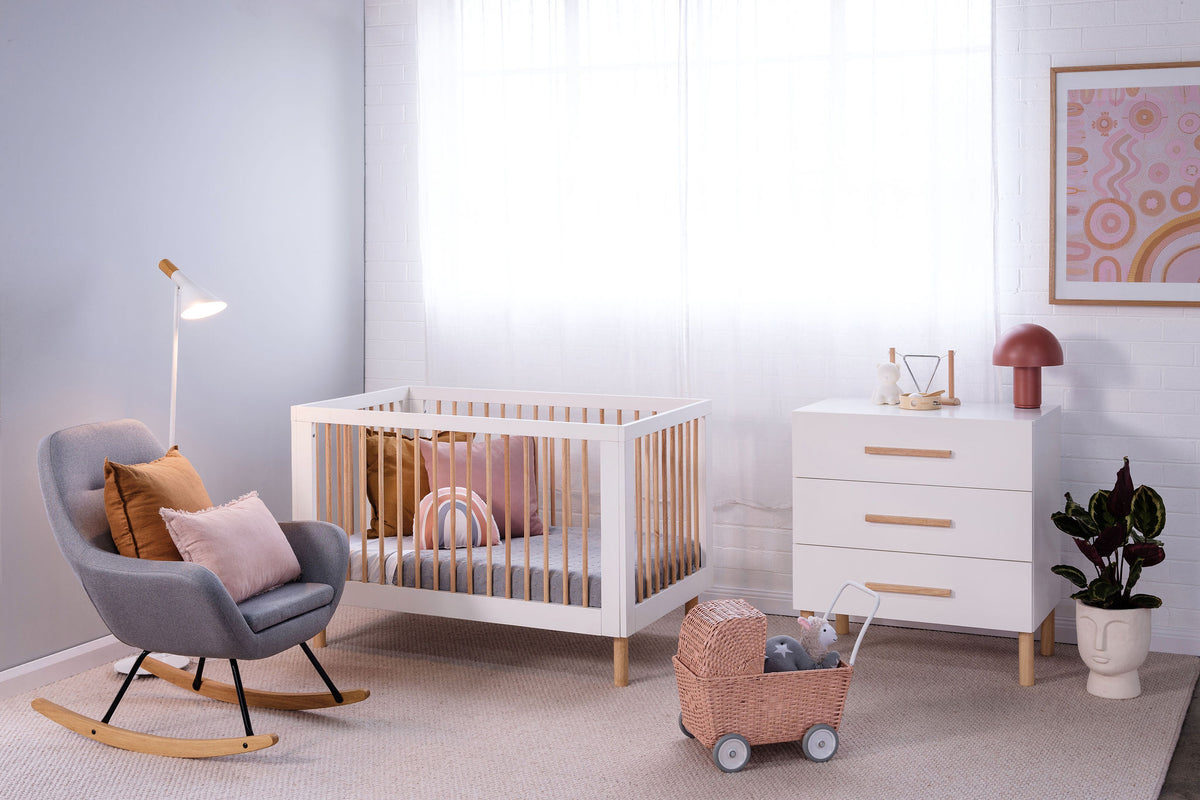
Before you bring your baby home for the first time, one of your very first tasks as a new parent is ensuring your little one has a safe sleeping environment.
While your whole home will need to be appropriately childproofed with time, identifying potential hazards in the nursery - where your little one will spend a large portion of their early years - should be your first port of call.
Unfortunately, accidents can happen in the blink of an eye.
According to recent data by the Victorian Injury Surveillance Unit (VISU) at Monash University, 1,267 children aged zero to four years were seen at Victorian emergency departments for injuries relating to change tables, cots and bassinets between June 2016 and June 2021 alone. The data shows that the majority of incidents relating to change tables and bassinets occur in the first 12 months, while 37% of cot incidents occur between one and two years, closely followed by babies under 12 months at 31%. Cot-related injuries also saw a 9% increase over this period, indicating that more nursery safety education is required.
When setting up your nursery, it’s important to be aware that you’re not unintentionally introducing hidden hazards into the room. Most people assume that nursery inspiration they find on Pinterest meets safety guidelines, but that is not always the case (we’re looking at you, bunting hanging off cots).
So where to begin? Take a few minutes to carefully evaluate the safety of each area of your nursery with this ten-step guide:
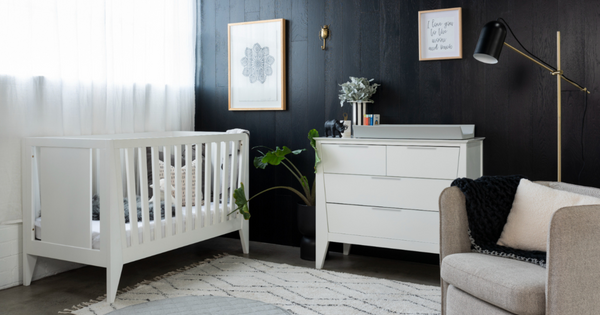
Step one: Is it future-proofed?
One of the best things you can do is childproof your baby’s room as if they’re already a toddler from the outset. Anticipating the abilities they will develop over time allows you to stay a few steps ahead so you don’t get any surprises when your little one tries something they weren’t able to do a few weeks earlier.
Sure, your newborn can’t pull on the blind’s cords just yet, but they will be able to before you know it. For each of the steps listed below, consider the safety of the item or area with both a baby and a toddler in mind.
Step two: Cot check
Does it meet current Australian safety standards? While cots purchased new in Australia should be fine, older or second-hand cots might require a bit of research. Amongst other things, these standards ensure that:
- The space between the vertical slats is not wide enough for little heads to get caught
- The slats are not horizontal which could become a ladder for curious tots
- All the sides are tall enough to prevent accidental falls (Read our guide How to know when your toddler is ready for a junior bed for more information about attempted cot escapes and toddler bed safety rails)
If you didn’t already check prior to making your purchase, there should be a sticker somewhere on the packaging and the cot itself (typically on the base) to indicate your cot’s compliance with the Australian Standards. If you can’t see one, you should check with the manufacturer.
It’s important that you never use a cot with loose or missing pieces. Always ensure that it has been correctly built according to safety instructions and that it is not shaky or wobbly. Lastly, make sure that all paints and finishes used are certified non-toxic and safe for children, like the Babyrest cot range.
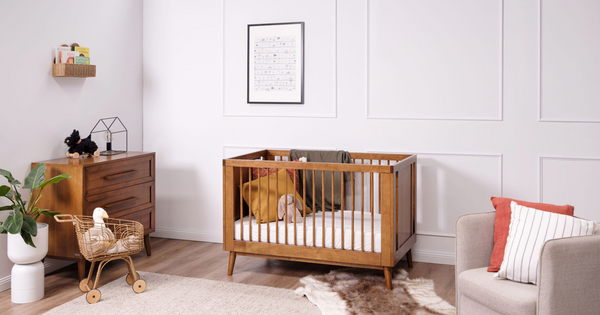
Step three: Mattress check
Choosing the right mattress is easily overlooked but essential for safe sleep. According to Red Nose, Australia’s leading safe sleep authority, it’s crucial to ensure the mattress is clean, firm, and the correct size with no gaps as a bare minimum.
To get the perfect fit, make sure that the mattress’s size matches the recommended size on the sticker on the cot base. Not sure where to find that specific size? The Babyrest cot mattress range is available in all of the most common sizes and shapes to help you find the best mattress for your baby. Next, look for a sticker or sign that says the mattress has been tested for optimal firmness in accordance with strict industry standards (AS/NZS 8811.1:2013).
In addition to that however, premium mattresses like the Australian-made Babyrest DuoCore dual-sided baby and toddler mattress can also offer ventilation channels for maximum breathability and temperature regulation, reinforced edges and hypoallergenic materials, all of which contribute to your little one’s safety and comfort.
Step four: Bedding and cot décor check
Are there blankets, throws, pillows (décor or otherwise), soft toys or bumper pads in the cot? They may make the space look cosy and inviting, but they can also pose a suffocation risk if your little one rolls over and is not able to roll back on their own, or if they get tangled in the blankets. Learn more about pillows here: Pillows for children under 4 years: What you need to know →
Likewise, bunting or fairy lights attached to the cot, as well as fabric canopies hanging over the cot, can all become strangulation risks. The hazards presented by fairy lights do not end there however – electrocution can occur if your little one chews on the cord, while the bulbs and batteries can result in choking. Also remember to remove any mobiles hanging over the cot once your little one is able to get on all fours.

Step five: Walls check
First, give your cot some room. Ensure a safe gap between the cot and the walls, and check that all windows, blinds and furniture are not within arm’s reach of the cot.
Next, look up. Is there anything near the cot that a toddler could pull down (such as mirrors or framed pictures), or that could fall on them? Instead of pictures or floating shelves above the cot, consider wall stickers for a fun but safer alternative.
Now, get on your knees to see things from a toddler’s point of view. Are there any outlets that need to be covered? A heater they could touch while hot or accidentally cover with a blanket? How about any cords that could become a trip or chew hazard? It’s time to think like a toddler!
Step six: Windows and blinds check
Windows always pose a danger, no matter how far off the ground they are. Ensure all windows in your house, but especially the nursery, are secure at all times.
Is there any furniture close to the window that little ones could try to climb? Does your window need a stop to prevent it from opening too wide (did you know children under five can fit through as little as a 15cm opening)? It’s important to note that screens alone are not always enough to prevent a fall.
Just as dangerous as windows are the blinds next to them. Consider installing some cord wind-ups to keep blind and curtain cords out of reach to prevent any strangulation risks.
Step seven: Ceiling check
When was the last time you checked the smoke detector inside and outside the nursery? It’s time.
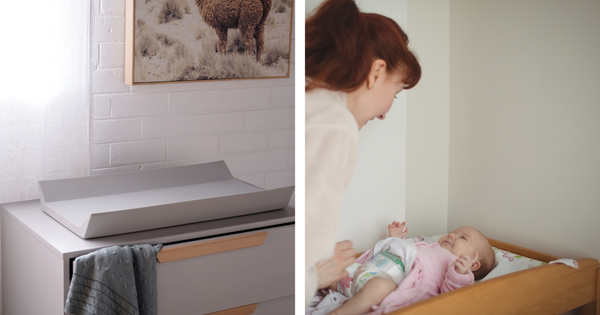
Above: Babyrest Nova change mat on a dresser (left), classic changing table with raised timber sides sourced from Pikwizard (right)
Step eight: Change table check
While you should never leave your baby unattended on a change mat, there are a few safety features you should look for in one.
Using chests that double as change tables has become very popular in recent years, however, many change mats are only designed for change tables that have raised timber sides. If you choose to go the chest route, it’s important to check that your change mat has the extra safety features you’ll need. Does it have firm, raised edges to help prevent rolling? How about a grippy base to prevent slipping? These will become more and more important as your little one starts to perform baby gymnastics!
According to VISU, 90% of Victorian change table injuries between 2016 and 2021 were caused by the child falling from the change table. Is your change mat up to standard?
See our comparison of the Babyrest Nova and the Leander Matty features – two of the best change mats on the market.
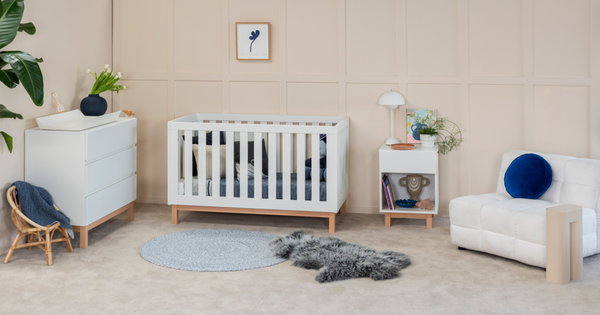
Step nine: Furniture check
Heavy or large furniture items can pose a toppling risk. In fact, VISU notes 212 instances of furniture toppling on children under four between 2016 and 2020 in Victoria alone. Of these incidents, 30% were related to tall boys/ chests of drawers, 27% tables and 9% shelves.
Look around. Double check that your chest of drawers and any bookshelves have been firmly secured the wall using safety straps. While most large furniture items will come with safety kits, you can also find them at any hardware store.
Keep out-of-bounds areas firmly curiosity-proof with childproof latches, and consider soft-close drawers like those of the Babyrest chest range to help keep little fingers safe. Finally, do you have any particularly sharp edges? Corner protectors can save the day from pesky bumps.
Step ten: Loose items check
Last but definitely not least, it’s so important to make sure there are no small objects lying around or within reach of your little one. Anything from small toys like Lego blocks, to coins, hair clips or safety pins can pose a risk. Be aware of any small toys or household objects that have a choking hazard label. The most important thing to be on the lookout for however is batteries - particularly button batteries. Check that all batteries are either out of reach or very secure.
To make things easy for you, the ACCC created a free Choke Check tool to help you physically measure and identify potential choking hazards for children under three. A must-have for any new parent.

We hope you found this ten-step guide helpful and that your nursery becomes a much-loved space conducive to sleep, imagination and learning! The fact that you’re taking the time to identify hazards means you’re already off to a very good start. For more room safety tips for the toddler stage, we recommend reading How to know when your toddler is ready for a junior bed →
Anstel has a team of passionate expert representatives. Get in touch with us today with any questions about nursery sleep essentials.
For further information and resources regarding preventable injuries for your little one, refer to the Kidsafe website for your state.
Please note, all VISU data is based on the Victorian Emergency Minimum Dataset and was kindly provided by Dr Jane Hayman of Monash University. To see the full reports, please reach out to VISU directly.
Keep reading:
- Discover the 2023 Babyrest Nursery Furniture Collection
- Tips for taking your newborn home from the hospital
- “A must have!” Why parents love Babyrest wool underlays
- Why rattan is an eco-conscious nursery choice
- How we make baby and toddler mattresses in Melbourne
More articles about safety:
